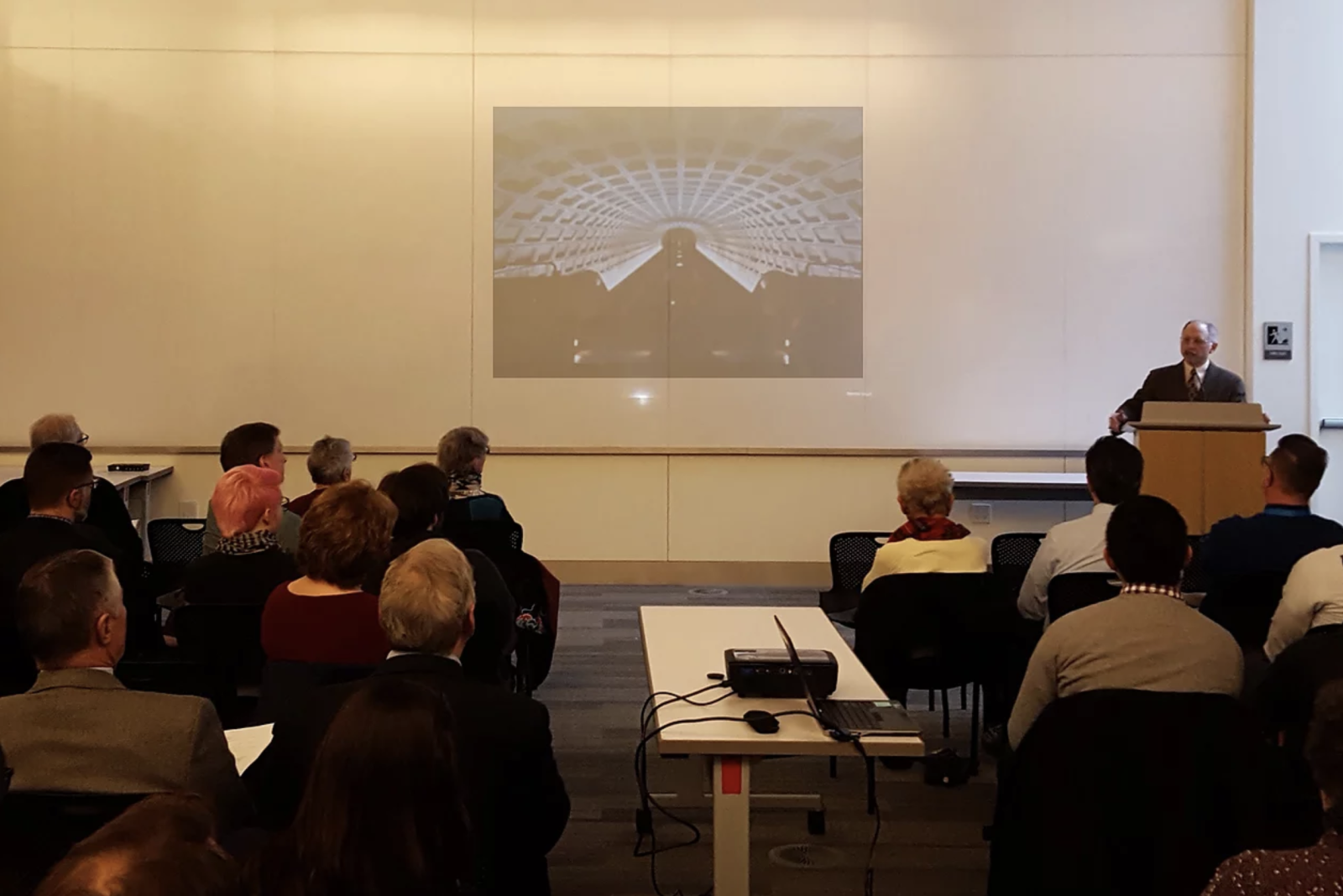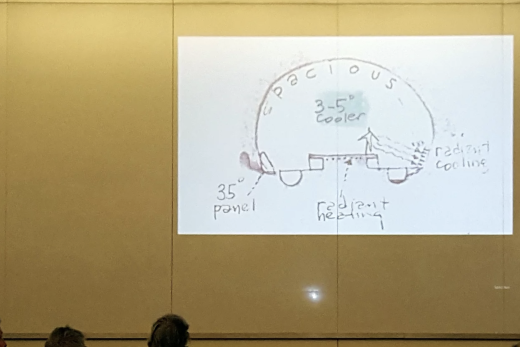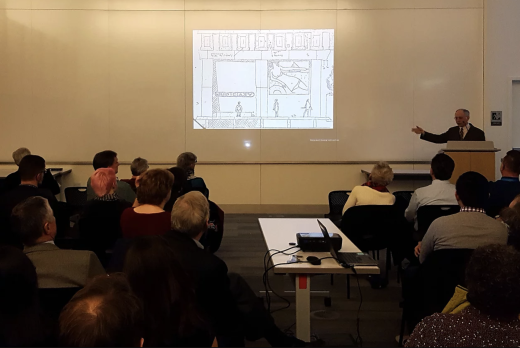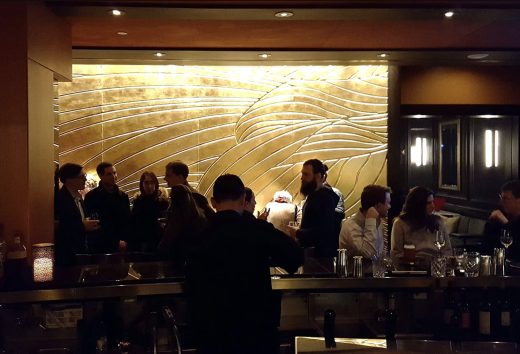Docomomo DC hosted a lecture by Zachary Schrag last week at the West End Library. Following introductions by Docomomo DC chair Tom Jester and former Harry Weese & Associates architect William J. Gallagher, Jr., Dr. Schrag led attendees through the contentious and sometimes surprising history of the D.C. Metro system. Schrag, who is the author of Metro’s definitive history, The Great Society Subway: A History of the Washington Metro (The Johns Hopkins University Press, 2006), spoke of the Metro’s evolution as a concept that grew out of the Great Society movement, with oversight from the Commission of Fine Arts.
Schrag’s lecture, which largely followed the structure of his book, discussed the origins of Metro within the context of Modernist architecture in Washington, D.C. as well as more general debates over public works arising from Lyndon Johnson’s “Great Society” era. Policy makers, Schrag noted, were not looking for the cheapest option when it came to Metro, but rather the best option for public works, as evidenced by the enduring architecture of the Metro system with its granite platform edges, bronze handrails, and signature concrete vaults with coffers that echo the Pantheon in Rome as well as Washington’s Union Station.
Those monumental vaults, which are now one of the most recognizable features of the Washington landscape, arose, according to Schrag, out of a contentious design phase during which several alternative schemes were presented. Architect Harry Weese and his cohort had traveled abroad to view precedents in other countries first-hand, and thus had plenty of design inspirations to choose from; engineers would have preferred a more rectilinear station shape more reminiscent of Toronto’s system, which, having been completed in 1954, was considered to be a clean, modern expression of subway architecture that ought to be emulated. Ultimately Weese landed upon the vault as being the most monumental form—one that eliminated the cramped spaces and columns found in systems like that of New York—as well as the most spacious.



